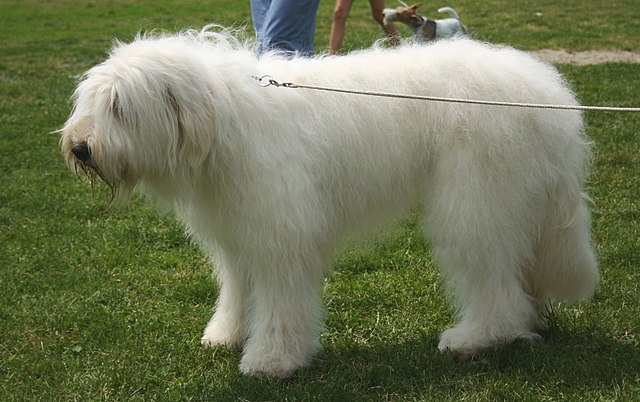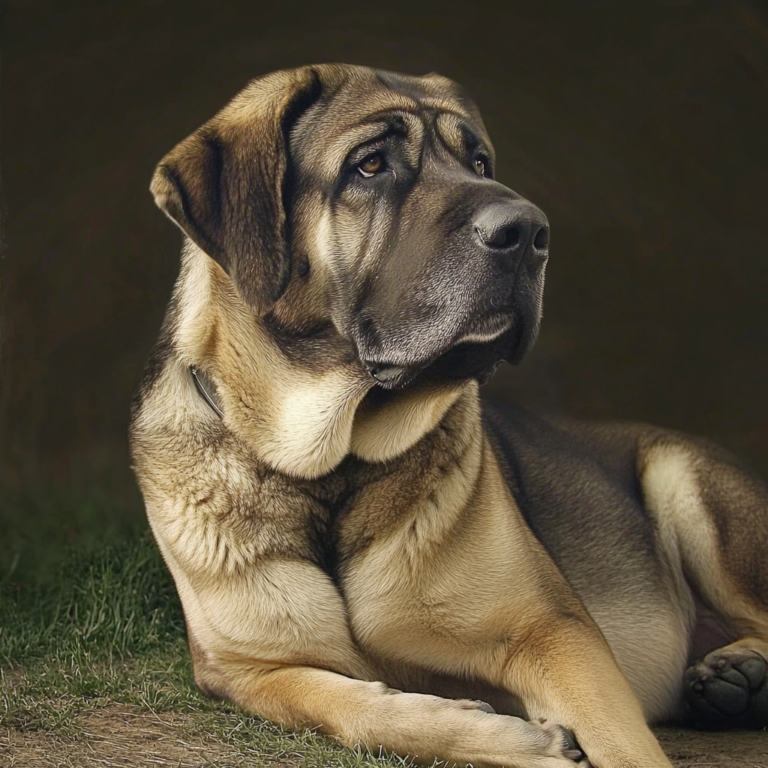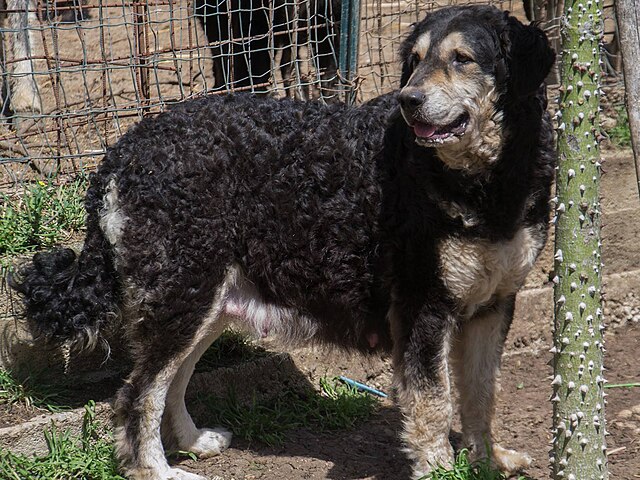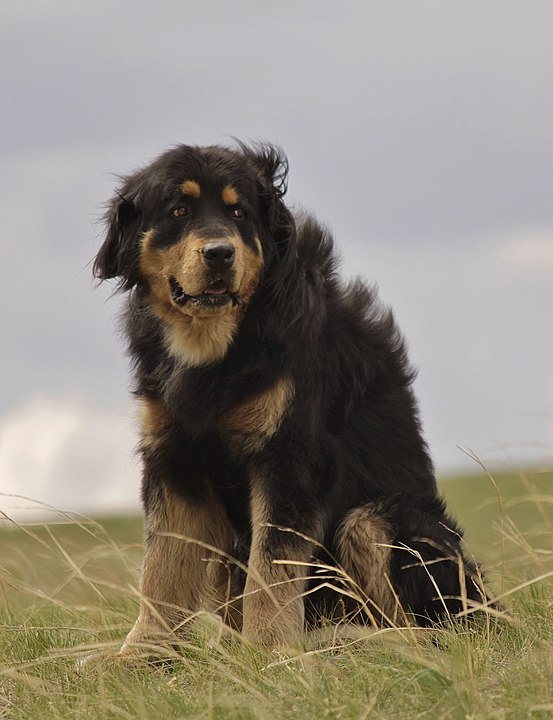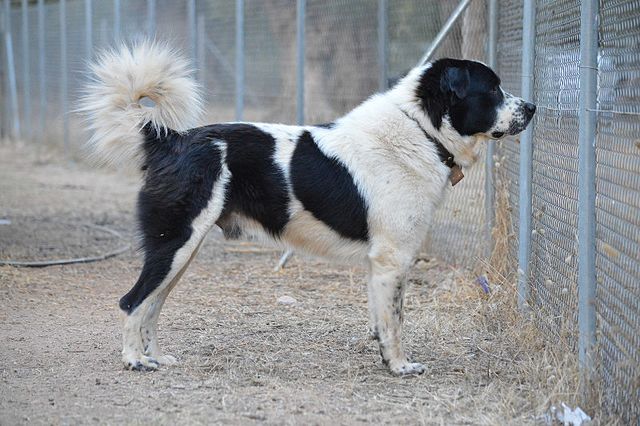The South Russian Shepherd Dog is said to be directly descended from the wolf, albeit with various herding breeds and sighthounds mixed in. They were used in the Russian steppes both to herd and protect livestock. Also known as the South Russian Ovcharka, this is one of three Ovcharka (sheepdog) breeds from Russia. This is a healthy and long-lived dog for his size (10-13 years on average), and is surprisingly agile and sprightly for such a big dog.
It is important to realize that South Russians, being a livestock guarding breed, are keenly protective of things they consider “theirs”. This means territory, animals and even people. They do this without training or assistance from their owners, and it can’t be trained away. Not only does this make them quite willful, but also a disaster in the wrong hands. This is definitely a breed for an experienced owner only! While a puppy raised with the correct care, socialization and training will likely grow up to be a loyal companion, this is still a sharp breed that can easily misinterpret a situation and react as such. Owners must be knowledgeable not only on how to raise a dog of this temperament, but must stay vigilant to ever-changing day-to-day trigger situations that may occur. An accidental visit by the man who reads the electric meter in the backyard could end in a lawsuit when the dog interprets this as an intruder breaking in!
SROs get along with children whom they were raised with and they will protect them with their lives. Other people’s children, on the other hand, are seen as “others” and are something to be suspicious about. Overall, South Russians see the world through the lens of “theirs” and “others”. If they feel that “their family” is being threatened they will absolutely defend their charge – whether or not any actual threat existed in the first place. Even other dogs that aren’t in the direct family are seen as “others”. For this reason they shouldn’t be trusted in dog parks or daycare situations. There is also same-sex aggression in the breed, especially toward strange dogs. Reactivity outside the home and territorial behavior inside the home (towards other dogs) are common.
When it comes to training, the South Russian Shepherd can be stubborn and prone to testing dominance. It is of vital importance that every South Russian be given obedience training and regular household rules to be followed so that he is easier to manage, and so that he doesn’t constantly challenge his owner. Because of his independence, he is not the type of dog who is eager to please and instead has an attitude of “what’s in it for me?” Most owners don’t expect hyper-fast responses to commands, nor expect endless repetition training to go over very well. Make no mistake, this is an intelligent breed that actually does learn quickly and will retain the knowledge well! Their original purpose just required them to have many traits which are in opposition to the typical “what can I do for you” temperament that other breeds possess. They do best with short training sessions that will later integrate into daily life.
The coat of the South Russian Shepherd Dog sets him apart from the other Ovcharkas. It is long, thick, wavy yet coarse, and of equal length on the head, legs, chest and tail. This scruffy-majestic appearance is very appealing to many! That said, know that it collects dirt and leaves easily, and the glorious appearance of a freshly washed South Russian is not the norm for those living in the country (or in places where it rains frequently). Dirt and debris will likely end up all over the floor or the carpet which will need to be cleaned up, as well as balls of fur during shedding season. They are not for neat-freaks!
The South Russian wants to be with his people at all times. This goes back to his history of spending the entire day with his herd. Unless an owner has given him livestock to watch over, he will watch over the human/s instead! This is not a dog that should spend all his time outside without any company – whether human or animal. In that scenario, one should expect a lot of nuisance barking and crater-sized holes in the yard, and possibly psychological issues such as fearfulness or unprovoked aggression.
The South Russian Shepherd is a slow-maturing breed that will likely take awhile to get over puppy-ish behavior. For a big dog, this can include things such as counter-surfing and pulling his owner down the street. Two more reasons to start training early! Making sure he gets enough exercise is also important to keep not only his body, but also his mind stimulated. The breed does require a high degree of physical exercise such as jogging or biking once or even twice a day.
SROs need a home with a fenced yard so that they do not wander and get themselves into trouble. A wandering South Russian without the boundaries of a fence will consider an increasingly larger and larger area his property, and might try to defend the whole neighborhood from other dogs, cars or the mailman. It should be stressed that although this is a guarding breed, they are less of a personal protection dog (one which can be trained specifically for protection purposes) and more of an independent-minded, “I’ll handle this myself” sort of dog.
Finally, the South Russian Shepherd Dog is not a cheap breed to buy or to care for. Their rare-ness means a puppy will cost more than other breeds of dog, including the likelihood of having to import from another country. Their size means they are more expensive to feed, and that general vet upkeep will probably cost more. Although not all will develop health problems, hip dysplasia is known in many lines and can be expensive to treat (or to buy insurance against). Their high-maintenance coat can be pricey if taken to a groomer, assuming one can find a groomer that can handle one. Training may even cost more if any behavioral issues pop up. Overall this breed requires an advanced set of skills, time and money on the owner’s part but in the right home, is an exceptional natural guard that many consider second to none at his job.
